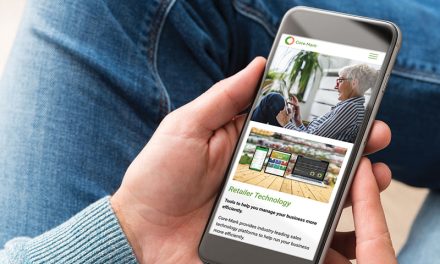
Revolutionize Operations: Integrating IoT Solutions for Ultimate Efficiency
By Prince Philip
Imagine a world where your coffee machine brews your favourite blend just as you wake up, your thermostat adjusts to the perfect temperature before you step through the door, and your car schedules its own maintenance. Welcome to the era of remote technology, commonly known as the Internet of Things (IoT), where everyday objects are smarter, more efficient, and seamlessly connected.
IoT has existed for almost a half century, and it connects events and processes (through devices) to the Internet to help unlock efficiencies by monitoring and controlling the connected physical devices, securely, at any time, from anywhere, and by anyone on any device.
How can we apply IoT to unlock new efficiencies at fueling sites? Here’s an example: Operators can use IoT to remotely monitor the fuel level in a tank via a probe and a connected automatic tank gauge (ATG), such as the TLS-450PLUS, to perform an automated task like ordering a fuel delivery when the tank level is low. There are a multitude of operational efficiencies and benefits that a connected ATG can unlock as shown in the mind map below.

Whether you’re developing an in-house IoT application or integrating with an Original Equipment Manufacturer (OEM) IoT solution, there are four major components to consider:
- A device that gathers data about a physical condition or event through one or more sensors.
- A modem or gateway hub that transmits this data to the Internet.
- A cloud/on-premise backend server which performs multiple energy intensive operations, such as data storage and analytics to transform the data into information.
- A front-end application also commonly known as a “dashboard” that visualizes actionable information.

The software within each component of the ecosystem illustrated above communicates via an Application Programming Interface (API). A simple way to describe an API is like a waiter at a restaurant taking orders back and forth between the customers and the kitchen. Since an API is the standard means for software to communicate, it is important that the IoT solution has external facing APIs to allow for integrations to other back-office systems within the value chain.
For example, an integration between a ticketing platform and the Veeder-Root IoT solution will allow for automated service ticket generation when a new alarm is generated by the ATG. The data is communicated via an API in real-time to the ticketing platform for resolution. This example relates to automating the alarm management and resolution process, and the same can be applied to automating inventory management and compliance management, among others.
Although daunting, advancements and growth of various IOT enablement platforms have made the development and maintenance of an in-house solution a feasible option. These enablement platforms can be broadly categorized into three main categories.
Applications Enablement Platforms provide scalable tools and templates for data storage processing and visualization. They also provide tools for user access management, advanced data analytics, and advanced features such as notification via Short Message Service (SMS).
Network Connectivity Platforms help manage data transfer and connectivity from the edge device to the Application Enablement Platform (AEP). They provide other value-added services such as device management.
Device Management Platforms ensure the connected IoT devices are functional and updated. They perform remote management of IoT devices including remote provisioning, configuration, diagnostics, and updates.
Alternatively, integrating an OEM IoT solution is a feasible option as well. OEMs utilize IoT enablement platforms to develop IoT solutions for the end users of their equipment. By owning the entire ecosystem of hardware and software, OEMs provide IoT solutions that are seamlessly integrated with the hardware and can provide fully encrypted, end-to-end data security, making them a quick and highly scalable alternative to developing an in-house IoT solution.
Regardless of the path, developing an in-house IoT solution or integrating an OEM IoT solution into your value chain will help organizations meet regulatory guidelines, unlock operational efficiencies, improve employee safety, and increase customer satisfaction, making it an essential part of any growth strategy.
Prince Philip is passionate about extending the safety and productivity of physical processes through IoT. After some initial work creating remote monitoring services with an instrumentation startup, Prince led the launch and commercialization of an IoT platform at Ametek to enable remote instrument condition monitoring and is currently developing the global IoT strategy for Veeder-Root fuel management solutions. Prince has a master’s in electrical engineering from the University of Pittsburgh and an MBA from Carnegie Mellon University.



































